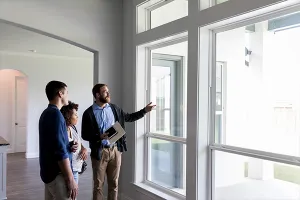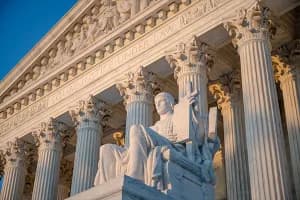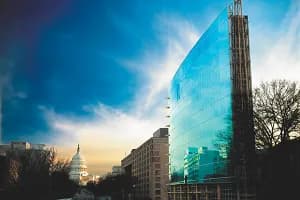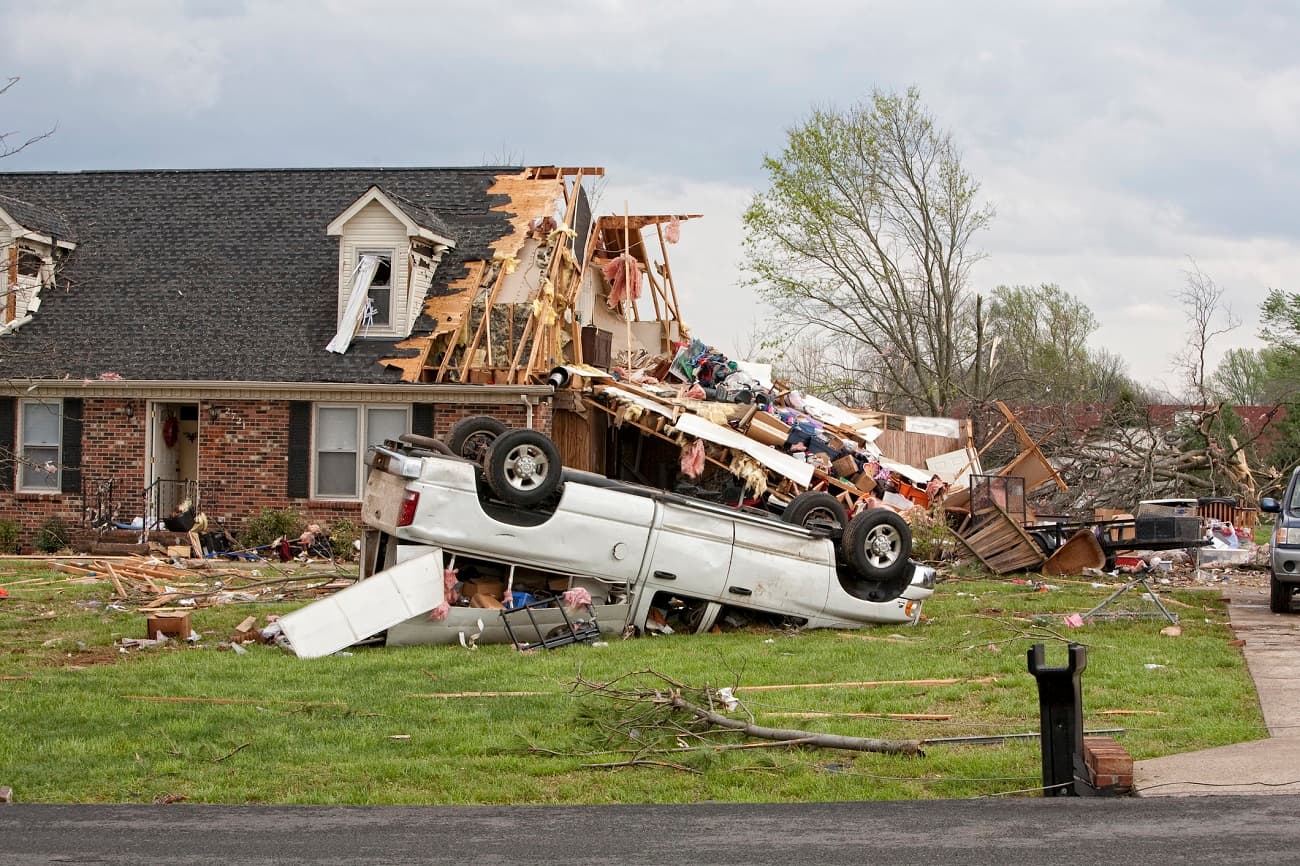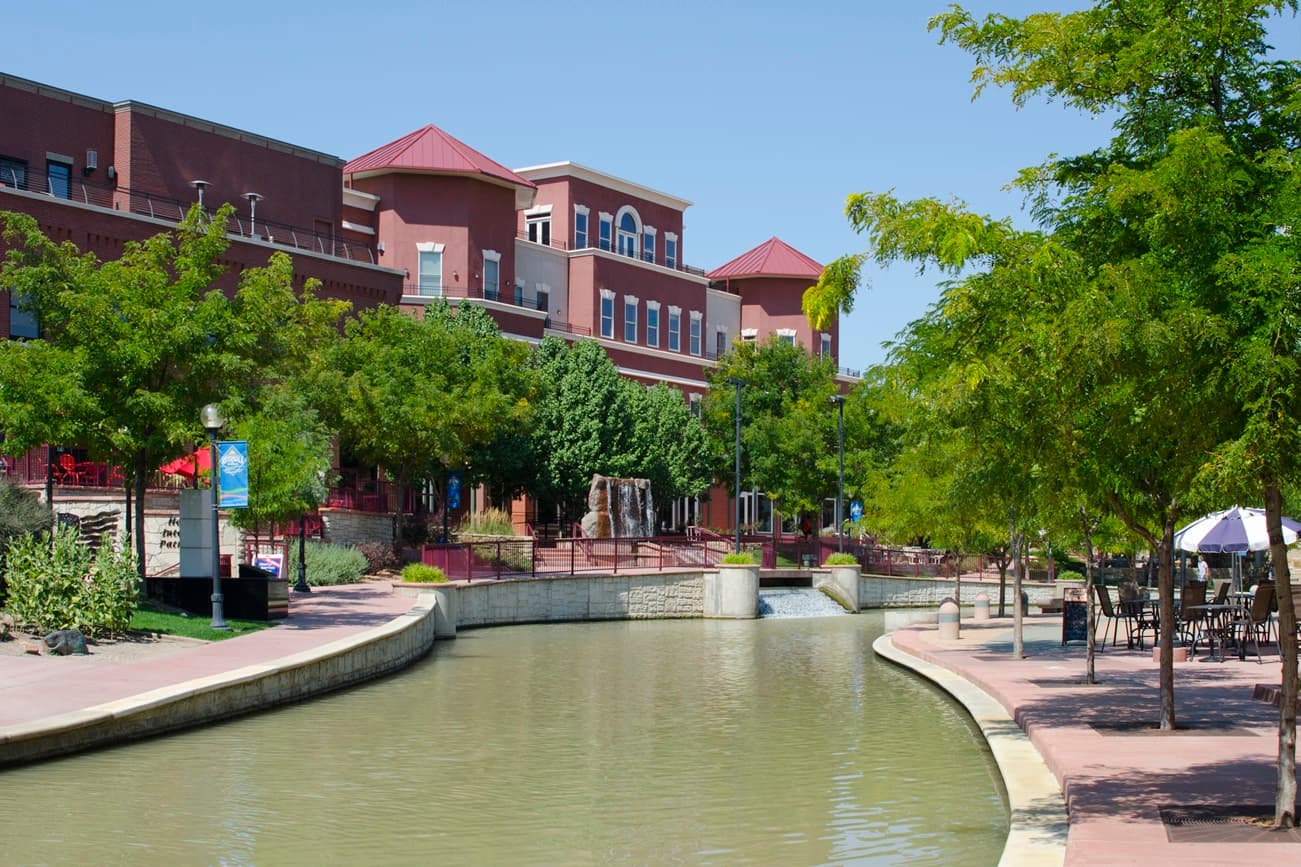When Stacy Barnes returned to Greensburg, Kansas, in May 2007, after a powerful EF5 tornado nearly wiped her former hometown off the map, she was stunned and saddened.

Yet she was also grateful. “My parents went through it and fortunately survived,” recalled Barnes, who drove into town at first light and was overcome by the devastation. The twister was on the ground for more than 28 miles and lasted 65 minutes with a maximum width of 1.7 miles.
“It was indescribable to drive around and try to find the places that were once so familiar and were just, well, gone,” she said.
“I thought I knew all the streets and who lived where. But moving around town, I felt lost,” said Barnes, who graduated from Greensburg’s Kiowa County High School in 2000. “Nearly 18 years later, it’s still hard to describe, to fathom.”

Greensburg is just one of scores of cities and towns that have been hard hit by natural disasters in recent decades, ranging from fires to floods to tornadoes to hurricanes.
Most have rebounded to come back stronger and more resilient. Many have taken advantage of the federal Building Resilient Infrastructure and Communities (BRIC) and Hazard Mitigation Grant programs to reduce their risks and develop strategies to mitigate the worst aspects of natural disasters.
In addition, some are relying on a 2018 study from the Urban Land Institute (ULI) study dubbed “Ten Principles for Building Resilience.” The report was produced six years after Hurricane Sandy ravaged the Caribbean and U.S. Mid-Atlantic region, causing an estimated $70 billion in damage and killing several hundred people. It encourages stakeholders to address vulnerabilities and enhance resilience.
Ten Principles for Building Resilience
- Understand vulnerabilities
- Strengthen job and housing opportunities
- Promote equity
- Leverage community assets
- Redefine how and where to build
- Build the business case
- Accurately price the cost of inaction
- Design with natural systems
- Maximize co-benefits
- Harness innovation and technology
Others have redefined disaster preparedness, creating what they call “first aid” survival kits, or programs, to survive the initial days, weeks or months so they can recover quickly. These kits include food, power and alternative communication and a community pantry that contains all the essentials of life.
Now, these communities hope they’ll be more prepared for the next big one. And for good reason. Nichole Wissman, a business professor at the University of San Diego, said the changing climate is anticipated to heighten the frequency and severity of natural calamities, including wildfires, floods, rising sea levels and tornadoes. That increased risk is prompting more preparation.
Recovery plans need to reflect the needs of stakeholders and leverage local knowledge.
Wissman said resilience means building communities using a “strong collective approach” in which all members can bounce back after a climate shock like a fire or a stressor such as a heat wave. Most important, she said recovery plans need to reflect the needs of stakeholders and leverage local knowledge.
One idea, she explained, is to use special financing tools to create districts that require climate-resilient infrastructure to reduce the harm from risks such as floods or fire. In California, these districts are legally established entities that can help drive regional climate adaptation and mitigation efforts. They can secure public and private funding, apply for grants and collaborate with local governments.
Greensburg, Kansas
In Greensburg, where 95 percent of the town was destroyed and nearly half its residents left, the community has been busy rebuilding from the ground up. Its population before the calamity was around 1,300. Now, it’s 800 and growing, said Barnes, who has served as the town’s city manager for the past six years.
“We have a childcare facility that just broke ground in March,” she said. “And we have a business park that is ready to go, so we are reaching out to prospective businesses about locating here.”
The tornado, which packed winds of more than 200 mph, claimed 11 lives in the town and injured many others. Fortunately, sirens blew for 20 minutes before the tornado hit, sending most residents into basements for safety.
Community members helped the town recover from a disaster that destroyed and damaged more than 1,000 homes and businesses.
Some thought Greensburg was gone forever. Many moved away. But Barnes said community members who stayed dug deep to find a pioneering spirit and help the town recover from a disaster that destroyed and damaged more than 1,000 homes and businesses.
In response, President George W. Bush declared Greensburg a major disaster, triggering federal resources from several agencies including the Federal Emergency Management Agency (FEMA), the U.S. Small Business Administration and the U.S. Environmental Protection Agency.
More than $100 million in federal assistance arrived for emergency response, temporary housing, assistance to residents and businesses, as well as for repairing or replacing government buildings, schools, emergency facilities and a hospital.

Other federal agencies—from the Agriculture Department to the Rural Development Program to the Department of Energy—played key roles in the recovery. A grass-roots community rebuilding effort, guided by a FEMA long-term recovery team, worked through many visioning meetings to develop a plan to chart Greensburg’s future and jump-start rebuilding.
More than 7,600 volunteers registered via AmeriCorps to help clean up and rebuild Greensburg.
Countless voluntary agencies and private-sector partners also contributed food, time, money and materials to support rebuilding. In May 2007 alone, the American Red Cross served 39,172 meals. And more than 7,600 volunteers registered via AmeriCorps to help clean up and rebuild Greensburg. In addition, workers hauled out of Greensburg nearly 80,000 truckloads of tornado-generated debris that totaled more than 800,000 cubic yards.
Barnes moved back to her hometown after the tornado struck to help it rebuild. “I’ve worked for the city in different capacities since then,” she recalled. “I wanted to be part of that recovery.”
Barnes said she is proud of how the residents responded and learned to work together as a community while “staying true to our identity. And of course, we are very grateful for all the aid that we received from volunteers to nonprofit organizations to government agencies. We wouldn’t be where we are today without that and it’s very humbling.”

Barnes called rebuilding a town from scratch a rare opportunity. “But that’s a club that you don’t want to necessarily be a part of,” she quipped. “However, we’re seeing it more often in our modern times with natural disasters of all kinds happening.
“Over the years, we have had many communities reach out to us to ask about lessons learned. We really see it as part of our job to pass along that knowledge because there are so many decisions that have to be made on a daily basis, and you’re not going to get everything right. It’s really easy to look back and say, ‘Oh, I wish we would have done this and that, or done things a little bit differently, or that was a really great thing we did.’
“But when you’re in the midst of a disaster, it’s an incredibly stressful period. You’re making hundreds of decisions, so you just do the best you can with the information you have at the time and take steps forward.”
In addition to having a well-developed recovery plan in place, she advises other communities not to rush and make possible rash, short-term mistakes. She tells them to review and update their emergency management schemes regularly and not let them gather dust on a shelf.
“You really need to make thoughtful decisions because what you do will affect your community for years and decades down the road. So don’t just throw something up to get going again.”
Leaders decided to erect strong, energy efficient public buildings that will withstand future storms.
In rebuilding Greensburg, she said leaders decided to erect strong, energy-efficient public buildings with poured insulated concrete-form block walls that will withstand future storms and be standing 100 years from now.
“Maybe even handle another EF5 tornado, though I hope we don’t have to find that out,” she mused. “Then the windows might get blown out, but the main structure would still be standing.”
She said Greensburg is proud of its attractive new buildings, which range from the school to the hospital to the city hall, to county facilities. The community even built an arts center.
“And our original claim to fame prior to the tornado was the big water well structure that was dug by hand in the late 1800s. It was a tourist attraction for us. We rebuilt a new museum around it that tells about our recovery, in addition to the well’s story.”
Matt Christenson, Greensburg’s mayor and the Kiowa County administrator, is another native. He was away in college working on a master’s degree when the tornado hit.
He returned that summer to help his parents restore the family home, which was badly damaged but not destroyed. They survived the tornado by sheltering in their basement. He never left Greensburg after that. “It’s now been 18 years and counting,” he said.
Christenson was elected to the city council in 2008 and has been involved with city and county government since then. He said Greensburg — which has an economy based on agriculture, oil and gas, as well as a growing number of wind and solar farms — has rebuilt smarter, beginning by planning for the long run.

“That was the start,” he said. “We basically wanted to make sure that our city plan and all of our related codes and zoning rules and regulations were going to fit our needs, not just in the rebuild, but far into the future as well.
“We actually had a couple of different master plans drawn up. One was done by FEMA as part of their recovery efforts after the storm. We also employed a Kansas City planning and architecture firm to do another one for us, and we’ve ended up using that one for the past 18 years.”
Keeping residents in the loop on rebuilding plans was key.
Christenson said keeping residents in the loop on rebuilding plans was key. “Absolutely,” he said. “Community input was a very high priority because at the end of the day, the town government is there to serve the needs of its residents.
“But we had a kind of a unique challenge after the storm because we had no suitable facilities to hold meetings. Even just keeping in touch with our friends and neighbors was hard.
“This was 2007, before the iPhone and Facebook existed. But we ended up having a series of meetings over that summer and fall. We actually brought in a giant circus tent, put it in one of the city parks and held our meetings there.”
He credited the county’s emergency management personnel who, prior to the disaster, gave residents plenty of warning. Many took cover in community shelters.
“It’s not unusual at all to hear a storm siren in Kansas, but this went on and stayed on for a long time, so people were able to find cover,” said Christenson, who noted that there is a museum 90 miles west of Greensburg in Liberal, Kan., that is dedicated to the famous “Wizard of Oz” movie.
In its updated building codes, Christenson said Greensburg considered, but did not require, basements. That was largely because leaders did not want to make the cost of new homes prohibitive. “Basements can add 20 to 30 percent to the cost of a house. ... we did not want to turn away anyone who couldn't afford to do that,” he said.
The demographics of Greensburg have changed since the tornado. “We are now a much younger community,” he said. “When older folks’ houses were blown away, those people whose children had graduated and moved out of town, they often followed them to be with relatives.
“But with younger families, if you had a job here, if you had kids in school here, almost without exception, they all returned to rebuild their homes and businesses. Though we’re less than 70 percent of the size we once were, our town’s school enrollment is actually higher than before the storm.”
Panama City, Florida
Panama City, in the northwest corner of Florida, was, like Greensburg, also heavily damaged by a natural disaster.
Hurricane Michael swept away 95 percent of the city’s tree canopy and damaged 90 percent of downtown buildings.
In Panama City’s case it was Hurricane Michael, a Category 5 (the worst possible) tempest that packed 155-mph winds when it hit in Oct. 2018. Michael swept away 95 percent of the city’s tree canopy and damaged 90 percent of downtown buildings.
The hurricane also brought with it a 14-foot storm surge, which, combined with the winds, smashed the city’s two marinas, tossing hundreds of sailboats onto land like broken toys.
Jonathan Hayes, the city manager of Panama City, grew up in the Panhandle community. The city is the largest community in the area and also the county seat of Bay County. Although he was living in the Washington, D.C. suburbs at the time, members of his family were in town when Michael struck. It wasn’t long before he’d moved home to help with the recovery.
One of the big lessons from the storm, he said, is that a city can never be too prepared. The city had a population of 38,000 before the storm. It has bounced back to nearly the same number now, but priorities needed to change.
“We needed to reassess our city, the damage that had been done and prioritize our resources going forward,” he said. “Of course, the biggest thing at first is getting the debris cleared so that you can move around safely on roads and throughout neighborhoods.” Some estimates put the amount of waste from the storm at 5.7 million cubic yards.
“Next is getting the power restored and then potable water flowing again,” he said. “Those are the three most critical things.”
The disaster overwhelmed Panama City’s small engineering department, which dealt with recovery projects that would require tens of millions of dollars, Hayes said. “So, the city wisely brought in an outside engineering firm to assess all of our utilities, water, sewer, stormwater… to create what we call the heat map so staff and elected officials could make the most objective decisions as possible about where to focus our resources on rebuilding.”
The city also worked closely with emergency managers from the state, FEMA, and the federal Department of Housing and Urban Development through a Community Development Block Grant Disaster Recovery (CDBD-DR) program.
Two years later, Hurricane Sally, a Category 2 tropical cyclone, hit the city and caused widespread flooding. That led to more rebuilding.
“We’re probably a third of the way through the recovery process now,” he said.
The result from their efforts? Hayes said Panama City is much more resilient than before Hurricane Michael. Among the accomplishments, the city updated its emergency operations plan clarifying the sequence of events that should occur before, during and after disasters.
It also remodeled and fortified its city hall to serve as a resilience hub. Staffers now can shelter there while running emergency operations. They added a generator that can power the entire building, including its multiple kitchens and other assets to deal with future disasters.
Wissman, the University of San Diego professor, said resilience hubs are beneficial before, during and after natural disasters because they offer centralized resources that the community has ideally been involved in developing.
“Before disasters, resilience hubs can function as community centers that strengthen overall public connections and provide training and resources to improve disaster preparedness,” she said. “We also know that after disasters, community networks often respond to fill in the gaps left by governments, so fostering community cohesion is a key function of resilience hubs.
“During a disaster, they can serve as a vital hub with shelter and essentials for the community. After a disaster, they can provide critical infrastructure to help streamline access to essential goods and offer services such as assistance with applying for and accessing recovery funds.”
The city required buildings that had more than 50 percent hurricane damage be raised two feet above base flood elevation.
Another change Panama City made, was to require buildings that were damaged more than 50 percent by the hurricane to be raised two feet above base flood elevation as they are rebuilt. The old requirement was one foot.
The city also has planted thousands of trees to restore its canopy and zeroed in on its downtown in the reconstruction process.
“Our downtown definitely took a hit,” Hayes said. “But one of the things the council was told was that when you want to revitalize and recover from something like this, you really need to start downtown, invest there and let it spill out from that point.
“So now we have a much more vibrant downtown—full of activities and cultural events—than we did prior to Hurricane Michael,” he said.
It features new streetscapes, plus a circle and a plaza in its primary intersection. The plaza’s highlight at Fourth Street and Harrison Avenue is a four-sided clock recovered from an old bank building. It has become a popular spot for wedding photos.
In 2020, Dover Kohl & Partners won a Charter Award for creating the city’s recovery plan. Revitalization of Harrison Avenue, a primary downtown street, is a centerpiece of that effort. Amy Groves, a principal and senior project director at Dover Kohl, said the aim is to make downtown more attractive by slowing traffic and inviting pedestrians and cyclists.

(Right) Harrison Avenue and 4th Street intersection conditions in 2019 following the hurricane.
The design features low curbs, widened sidewalks, paving bricks rather than asphalt, new trees and landscaping, as well as crosswalks with alternating-color pavers.
She said it also promotes housing adjacent to downtown, complete neighborhoods that promote walkability, resilient open spaces and a waterfront promenade that fortifies and protects against storm surge.

Groves said Dover Kohl came to Panama City six months after the storm to aid with the recovery action plan. “A big part of what we did was host scores of community meetings to find out how people wanted to rebuild,” she said. “And yes, we started with the downtown area because that is the center of community life in Panama City. We were a little nervous, honestly, at first, that people wouldn’t be ready to talk about visioning for the future when they had just gone through such a big hurricane.
“But what we found was having these meetings and listening sessions and looking toward the future was actually part community therapy.”
And while streetscapes filled with trees are attractive, she said the plans also include soil cells under those trees that will help with the stormwater drainage and reduce flooding.
“This is an example of rebuilding infrastructure that is, as you say, aesthetically pleasing, but also better designed to make the city more resilient. A lot of positive things have happened in Panama City in the past couple of years.”
Kaydee Albritton, CEO of the Central Panhandle Association of REALTORS® (CPAR), agreed with Groves about Panama City’s rebound.
“We’d never experienced a hurricane of this magnitude,” she said. “There were a lot of lessons learned, and it presented new opportunities and regrowth for our community and local government.”
Albritton emphasized the importance of resilient infrastructure that is properly funded and maintained. Another key is strengthening and enforcing stringent building codes.
As for emergency communications, she said breakdowns during the hurricane were particularly troublesome. “All of us who had Verizon were without communication for around two weeks, so I ended up buying a ‘burner phone,’” she said.
The community has since implemented alternative solutions that send geo-targeted emergency alerts to all mobile devices within an area. She noted that transportable satellite systems such as Optus’s SatCat can restore 3G and 4G coverage in needed areas.
“Organizations like Télécoms Sans Frontières can help by setting up satellite-based networks in disaster zones,” she added. “And amateur radio operators, or ‘hams,’ can play a key role when conventional systems are down.”
Albritton praised Bay County’s emergency management program for providing first-aid-kit instructions on what communities should do to prepare for natural disasters and where to find resources, including sandbags. She also lauded “Alert Bay,” a county notification system that can provide public information, such as where to get food, water and other necessities.
After Michael hit, she said many local groups stepped up such as her REALTORS® organization, which collaborated with members to assess property damage and share vital information to clients and other residents. By bridging property owners and emergency services, she said, CPAR facilitated damage assessments and expedited repair processes.
In addition, REALTORS® from around the state arrived “to be the boots on the ground,” said Albritton, handling basic tasks such as spreading tarps on damaged roofs and helping with phone calls and email.
Paradise, California
In Paradise, Calif., the devastating Camp Fire swept through town in Nov. 2018. It killed 85 people, lasted 18 days and consumed 18,804 structures.
It all but destroyed the nearby Butte County communities of Concow, Magalia Butte and Creek Canyon—an area known locally as “The Ridge.”
Paradise has rebounded since the inferno. The town grew by 16.1 percent in 2023, making it the fastest-growing town in the state for several years in a row. Its population is now around 12,000, according to the California Department of Finance. Prior to the Camp Fire, it had 26,500 residents. Within months, all but 4,000 had left.

Warren Bullock, a real estate broker and president of the Sierra North Valley REALTORS® Association, said growth has slowed somewhat from its hectic pace.
“The first couple years out of the gate, we had lots and lots of new builds and new permits, but we’re down to 70 percent now of what it was in, say 2020, though that’s still a bunch,” he said.

“Initially, we had a lot of people who wanted to return home. Many of them have done so, and now we are shifting to more new residents,” he said.
Bullock, a Paradise resident, thinks his town is now better prepared for the next disaster. His home was damaged in the blaze but not destroyed. His rental properties, though, were incinerated.
His advice to other communities, especially in fire prone areas? “Try to be prepared for the unexpected, which is obviously a hard thing to do,” he said. And for individuals, “think outside the box and think of what could happen to you, your home, your bills, your family photos, your insurance policies.
“Don’t just have a grab bag, but have things copied and stored on a remote server so you can continue living your life if you had to leave tomorrow, or immediately.”
Colette Curtis, the town's recovery and economic development director, said soon after the fire, officials aimed to recover and eventually to survive and thrive. They established three ways to increase resilience:
- Adopt building standards that surpass state codes and follow guidelines for homes in wildland areas.
- Enforce strict rules to limit and manage weeds, brush and trees, promoting neighborhood participation in a Firewise community program.
- Create buffer zones and green spaces on the edges of the community to slow future wildfires.
Curtis said the city is much more resilient than prior to the Camp Fire and has made additional changes. “All our traffic signals have backup generators. We've installed evacuation sirens which have underground power, solar battery backup, connection to satellites, and our utilities and telecommunications are all being put underground.”
To prepare for a natural disaster, Curtis advises other communities to “plan for the worst-case scenario you can imagine, and then educate your residents on what to do.”
Added Curtis: “We learned many things from the fire, but most of all, that our community is worth the work it takes to rebuild and live in this beautiful place. It’s our home, and while we will always face fires, we have learned to live resiliently.”
